The Role of IPN in Treating Gastrointestinal Disorders
Understanding the Impact of Intraperitoneal Nutrition in Gastrointestinal Therapy
Intraperitoneal nutrition (IPN) has emerged as a crucial modality in the management of complex gastrointestinal disorders. Its application extends from supporting patients with renal failure on peritoneal dialysis to specific interventions in acute pancreatitis, highlighting its potential to improve outcomes by tailored nutrient delivery and infection management. This article explores the multifaceted role of IPN, including its mechanisms, benefits, and emerging biomedical applications, alongside the contributions of healthcare professionals dedicated to advancing gastrointestinal care.
Fundamentals of Intraperitoneal Nutrition (IPN)
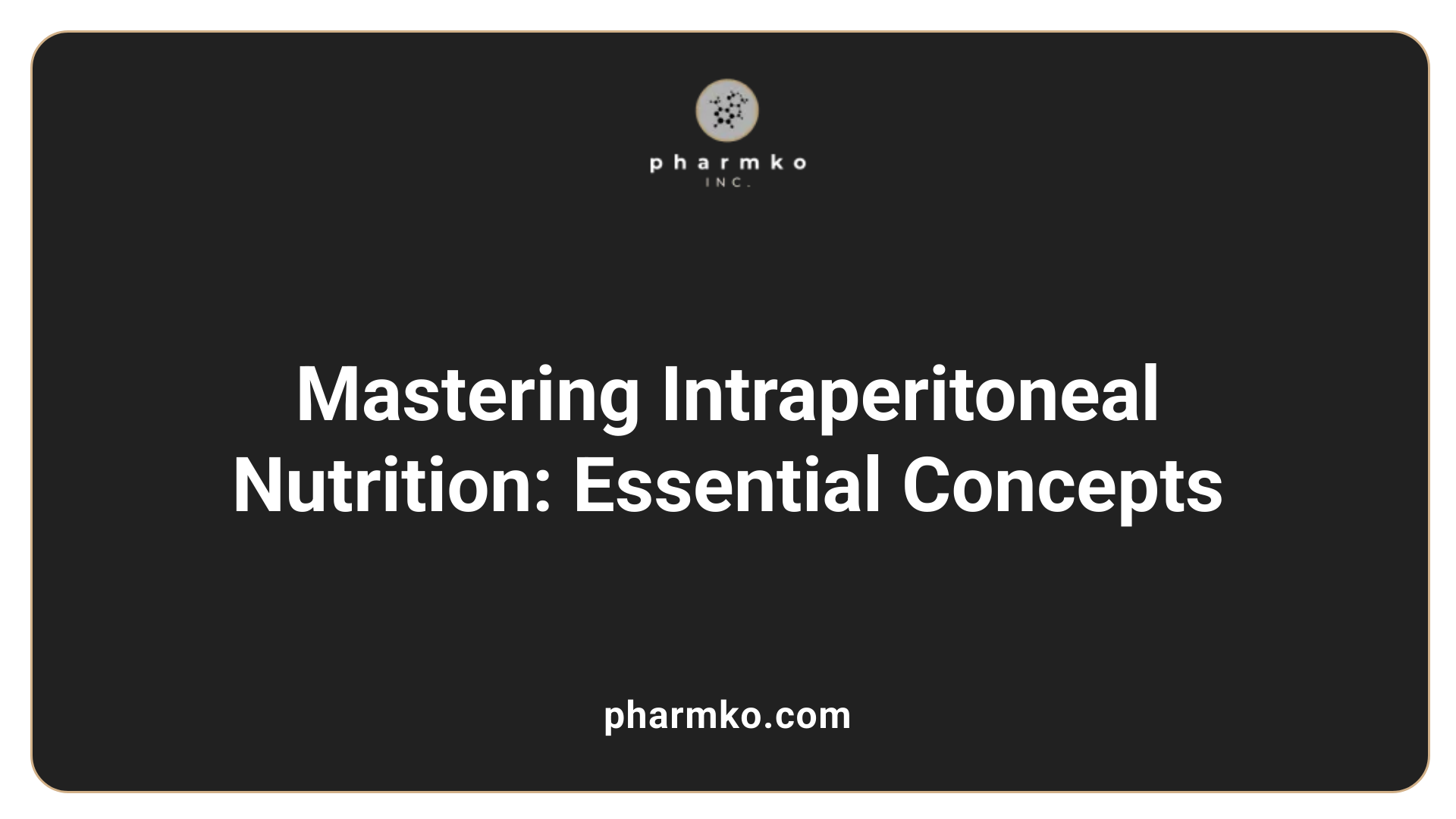
What is intraperitoneal nutrition?
Intraperitoneal nutrition (IPN) is a targeted therapy used mainly for patients receiving peritoneal dialysis. This method involves adding essential nutrients like amino acids, dextrose, and lipids directly into the peritoneal cavity through dialysate solutions.
Unlike intradialytic parenteral nutrition (IDPN), which delivers nutrients via the bloodstream during hemodialysis sessions, IPN supplies nutrients via the peritoneal membrane. This approach helps replace nutrients lost during dialysis, particularly proteins and calories, which are critical in preventing malnutrition.
IPN is typically administered at home, integrated into the regular exchange process of peritoneal dialysis. By providing necessary amino acids and other nutrients, IPN supports the maintenance of serum albumin levels and overall nutritional health in patients.
This nutritional strategy also aids in reducing complications related to malnutrition, such as immune suppression, increased infection risk, and hospitalizations. It is a vital component of comprehensive care for long-term dialysis patients, helping them maintain better health outcomes and quality of life.
Clinical Applications of IPN in Renal and Gastrointestinal Disorders
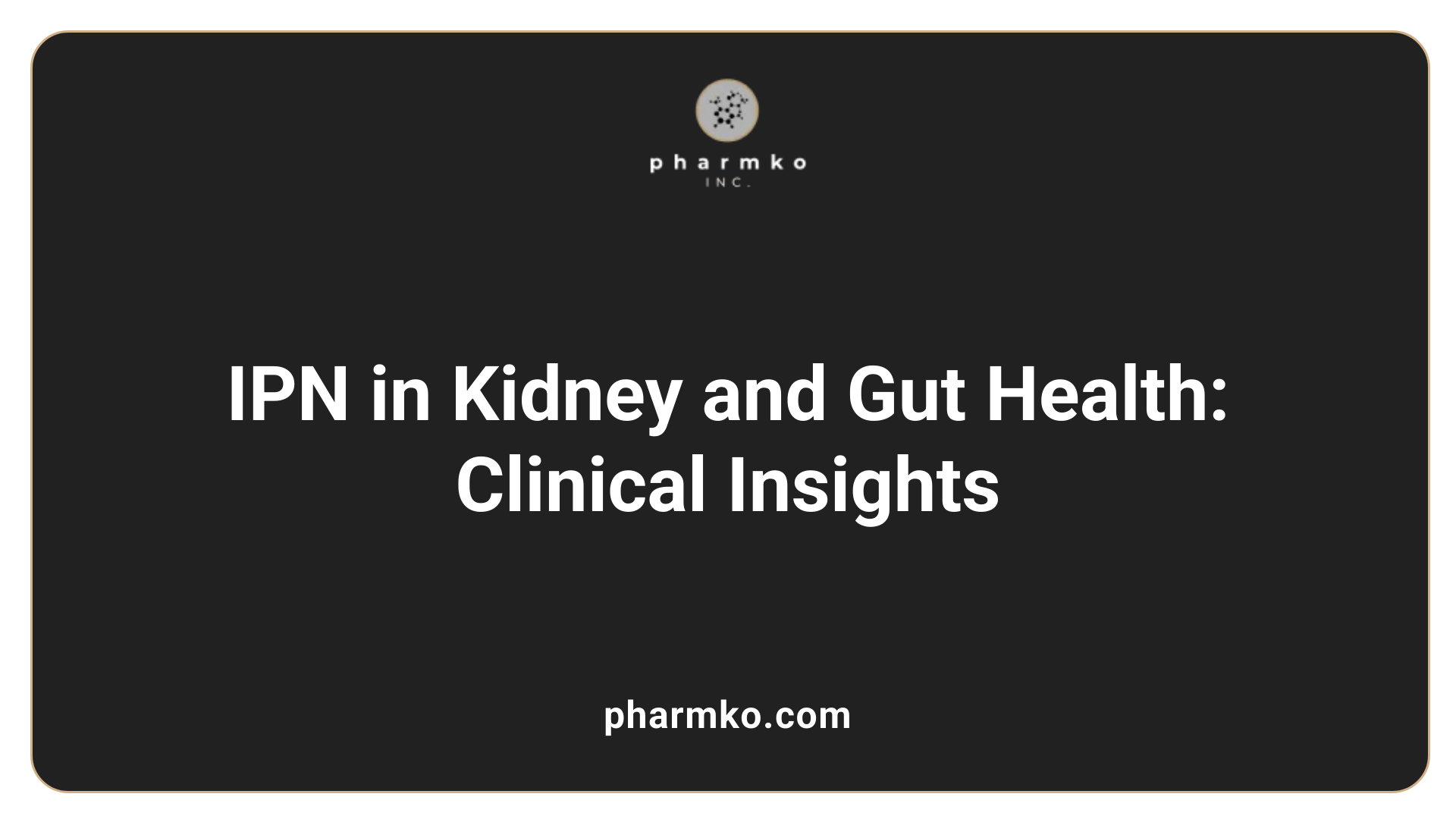
What is IPN treatment?
Intraperitoneal Nutrition (IPN) is a specialized therapy mainly used for patients on peritoneal dialysis. This approach involves adding key nutrients such as proteins and amino acids directly into the dialysate—the fluid used to cleanse the peritoneal cavity. This method serves several important purposes.
Firstly, IPN helps replace amino acids that are lost during dialysis. Since the dialysis process filters nutrients out of the blood, patients can become deficient in essential proteins. By adding these nutrients into the dialysate, IPN helps maintain proper protein levels, supporting overall health.
Secondly, IPN plays a role in managing blood glucose levels. Dextrose-based dialysate, while effective at removing waste, can cause elevated blood sugar. Incorporating proteins instead of dextrose helps control glucose levels, reducing metabolic stress.
Furthermore, IPN enables patients to receive nutrition at home, which can improve compliance and quality of life. It delivers nutrients locally into the peritoneal cavity, directly supporting the patient’s nutritional needs.
In summary, IPN is a vital nutritional strategy for peritoneal dialysis patients. It not only helps replenish lost amino acids but also aids in glycemic control, contributing to better health outcomes and enhanced quality of life.
Management of Acute Pancreatitis and Pancreatic Necrosis with IPN
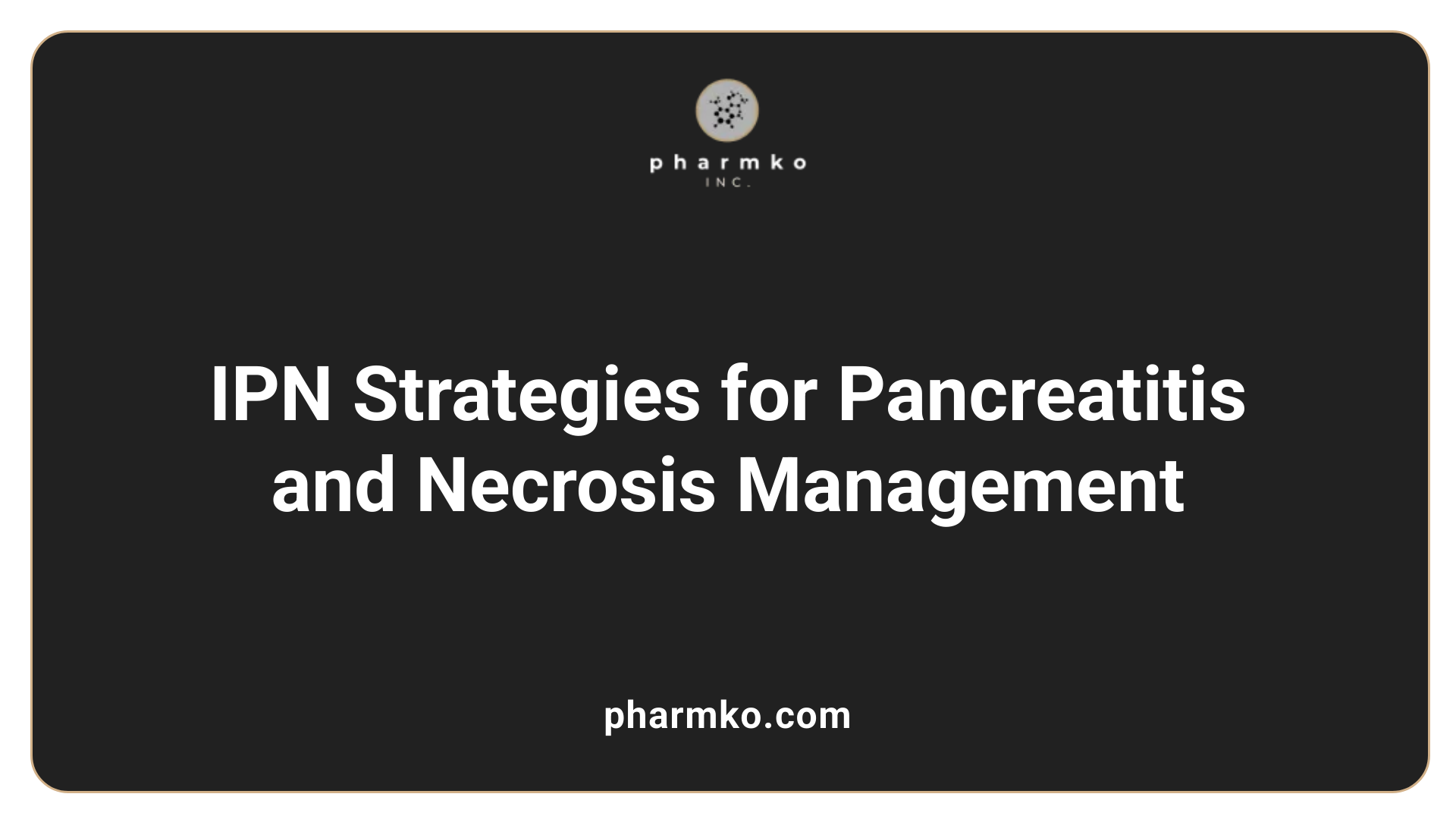
How is IPN used in the treatment of acute pancreatitis and pancreatic necrosis?
Interventional pancreatic necrosectomy (IPN) is a minimally invasive procedure used to treat severe cases of acute pancreatitis complicated by infected pancreatic necrosis. The primary goal of IPN is to control infection, decrease intra-abdominal pressure, and prevent or delay the need for open surgical necrosectomy.
This approach often involves techniques like percutaneous catheter drainage (PCD) and endoscopic drainage. These methods allow for the drainage of infected fluids and necrotic tissue through small incisions or natural body openings, reducing the risks associated with traditional surgery.
The step-up approach starts with the least invasive method—in this case, image-guided drainage—and escalates to more aggressive interventions if necessary. Studies show that this strategy reduces complications such as bleeding, fistula formation, and overall mortality.
Timing is a critical factor in the success of IPN. Most experts recommend delaying necrosectomy until about four weeks after the onset of pancreatitis, when the necrosis has walled off, making the procedure safer. However, early intervention may be needed in urgent situations like abdominal compartment syndrome or ongoing sepsis.
In addition to drainage, antibiotic therapy guided by microbiological analysis assists in controlling infection. The combination of timely, targeted drainage and antibiotics helps to improve outcomes by managing infection effectively without the higher risks associated with extensive surgery.
Overall, the use of IPN with a strategic, step-up approach has become the standard of care, providing effective source control while minimizing patient risk.
Benefits and Mechanisms of IPN Therapies in Gastrointestinal Disorders
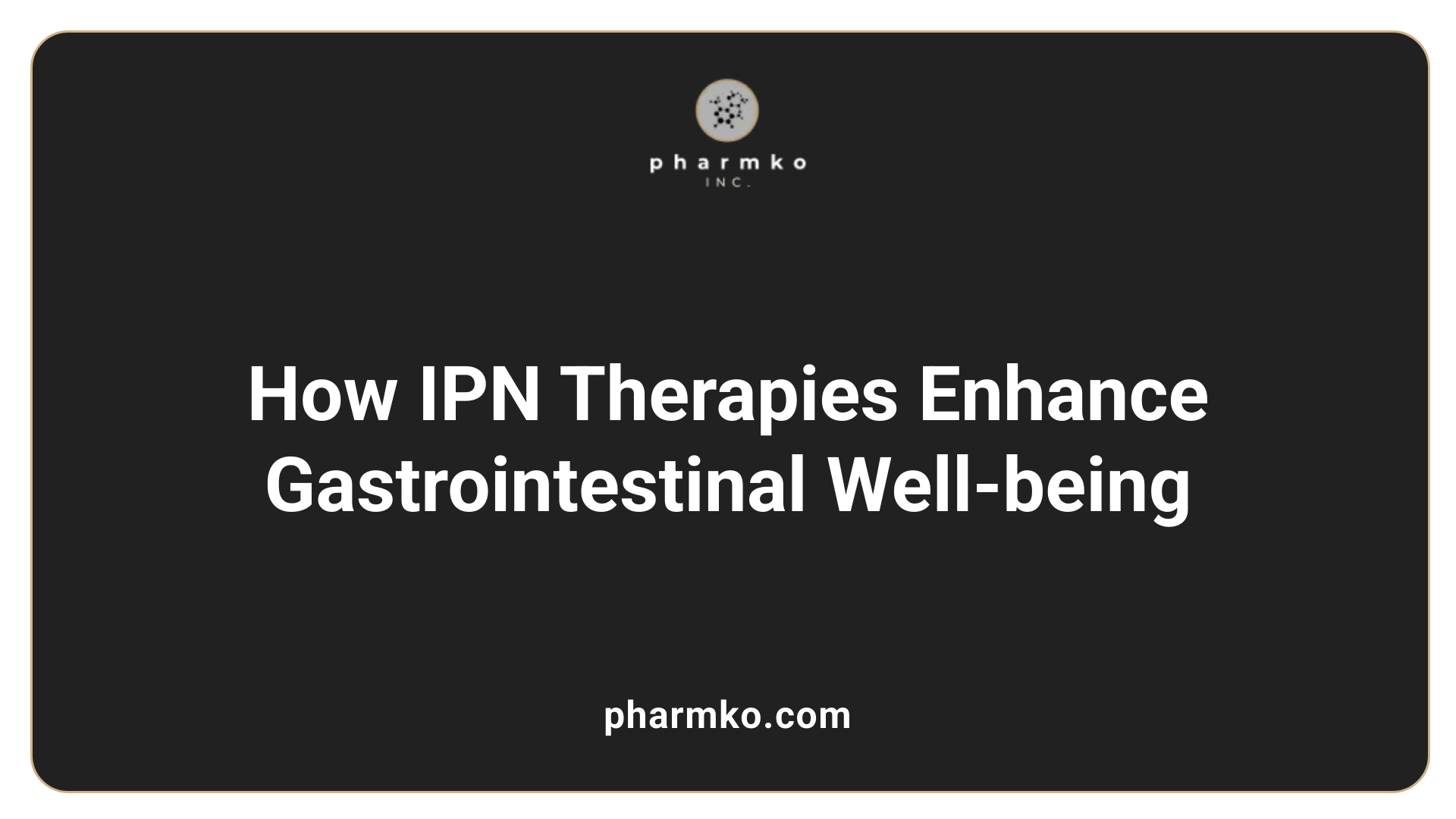 Intraperitoneal Nutrition (IPN) therapies and related nutritional strategies play a significant role in managing gastrointestinal conditions such as Crohn’s disease and inflammatory bowel disease (IBD). These targeted interventions work through several interconnected mechanisms to support mucosal healing, regulate immune responses, and restore intestinal barrier function.
Intraperitoneal Nutrition (IPN) therapies and related nutritional strategies play a significant role in managing gastrointestinal conditions such as Crohn’s disease and inflammatory bowel disease (IBD). These targeted interventions work through several interconnected mechanisms to support mucosal healing, regulate immune responses, and restore intestinal barrier function.
One of the primary benefits of IPN-based therapies is their ability to modulate the gut microbiota. For example, specialized medical foods like VSL#3, a probiotic, introduce beneficial bacteria that improve microbial diversity. These bacteria can outcompete harmful pathogens, produce anti-inflammatory metabolites, and enhance mucus production, which is crucial for maintaining a protective gut barrier.
Barrier reinforcement is another key aspect. Serum-derived bovine immunoglobulin (SBI) in products like EnteraGam helps bind microbial toxins and degradation products, preventing their access to the gut’s immune cells. This binding preserves the integrity of tight junctions between epithelial cells, reducing gut permeability—a factor that can exacerbate inflammation.
The regulation of immune responses is also facilitated by these therapies. Components such as TGFβ in formulations like Modulen IBD have anti-inflammatory properties, supporting immune regulation and promoting a balanced immune environment. The reduction of pathogenic bacteria and inflammatory cytokines contributes to decreased immune activation, fostering a state conducive to healing.
Finally, these interventions support mucosal healing. By improving microbial composition, strengthening the epithelial barrier, and modulating immune activity, they promote tissue repair and remission in chronic GI disorders.
| Aspect | Example therapies/Components | Effects/Goals |
|---|---|---|
| Microbial modulation | VSL#3 probiotics, beneficial bacteria supplementation | Enhance microbiota diversity, produce anti-inflammatory metabolites |
| Barrier reinforcement | SBI (in EnteraGam), tight junction support | Prevent microbial translocation, reduce permeability |
| Immune response regulation | TGFβ in Modulen IBD, immunomodulatory ingredients | Reduce cytokine levels, suppress excessive immune activation |
| Mucosal healing | Overall enhanced microbiota and barrier integrity | Promote tissue repair, decrease disease activity |
These therapies, through their combined action on microbes, barriers, immune factors, and tissue repair processes, significantly contribute to better clinical outcomes, including remission and improved quality of life for patients with gastrointestinal inflammatory disorders.
Impact of IPN in Liver-related Gastrointestinal Conditions
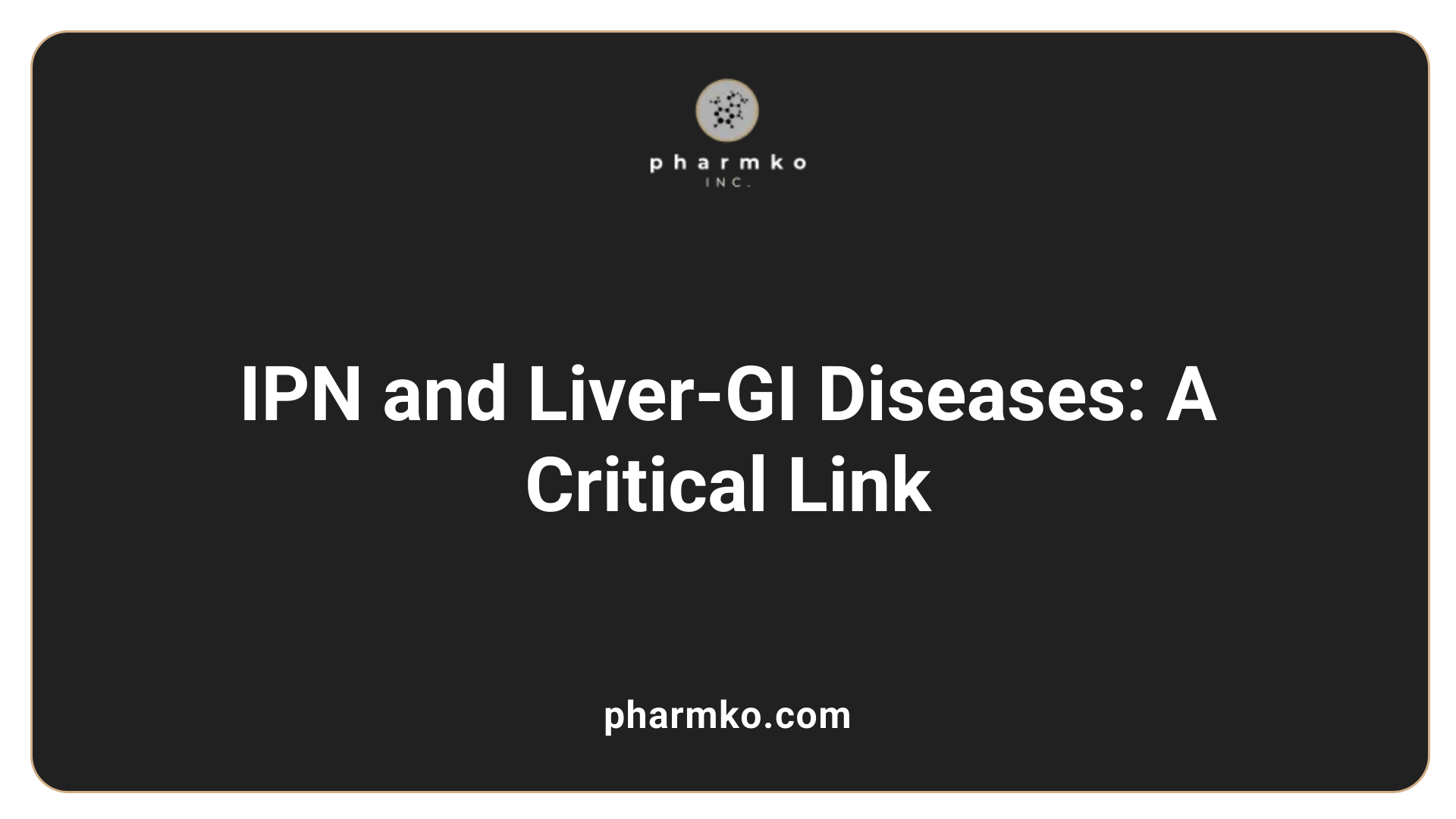
What is the significance of IPN in the management of liver-related gastrointestinal disorders?
Indeterminate Pulmonary Nodules (IPN) hold notable importance in managing patients with liver-related gastrointestinal issues, especially those undergoing surgeries like hepatic resection for colorectal liver metastases. Detecting IPN before surgery helps doctors identify potential lung metastases early.
This early diagnosis is crucial for planning the most effective treatment strategies. While the presence of IPN doesn't necessarily mean the patient will have a worse overall or disease-free survival rate, it serves as an important marker for future risks.
Research indicates that about 50% of patients with IPN go on to develop lung metastases within roughly 10 months. This statistic highlights the need for careful monitoring and follow-up. By tracking these nodules closely, healthcare providers can detect metastasis early and adjust treatment plans promptly.
Monitoring and risk assessment
Regular imaging and follow-up are vital for patients with identified IPN. Monitoring helps assess whether nodules grow or change, which could indicate progression to metastasis.
Risk assessment incorporates factors like nodule size, appearance, and change over time. Utilizing this information guides clinicians in deciding between continued observation and more aggressive interventions.
Implications for metastasis detection
The detection of IPN acts as an early warning system. It enables clinicians to detect potential metastases before they become clinically evident, allowing for early intervention.
Early detection improves the chances of managing metastases effectively, potentially extending patient survival and quality of life.
Treatment planning
Identifying IPN influences both surgical and medical treatment. For example, the presence of nodules might lead to more comprehensive preoperative evaluation and post-surgical surveillance.
It can also determine the need for adjunct therapies such as chemotherapy or targeted treatments specifically aimed at controlling or eradicating lung metastases.
| Aspect | Details | Relevance |
|---|---|---|
| Detection Methods | Imaging techniques like CT scans | Critical for identifying IPN early |
| Risk Stratification | Nodule size, growth rate, morphology | Guides follow-up intensity and treatment decisions |
| Impact on Outcomes | May not reduce survival but aids in early detection | Helps in timely management of metastasis |
| Follow-up Strategies | Periodic imaging, biomarker analysis | Maintains ongoing assessment and care |
Overall, understanding the implications of IPN in liver-related gastrointestinal conditions underscores its role in improving patient management. It helps shape personalized treatment pathways, ultimately aiming to enhance long-term outcomes for patients facing complex gastrointestinal and hepatic diseases.
Managing Colonic Fistulas in Pancreatic Necrosis with IPN
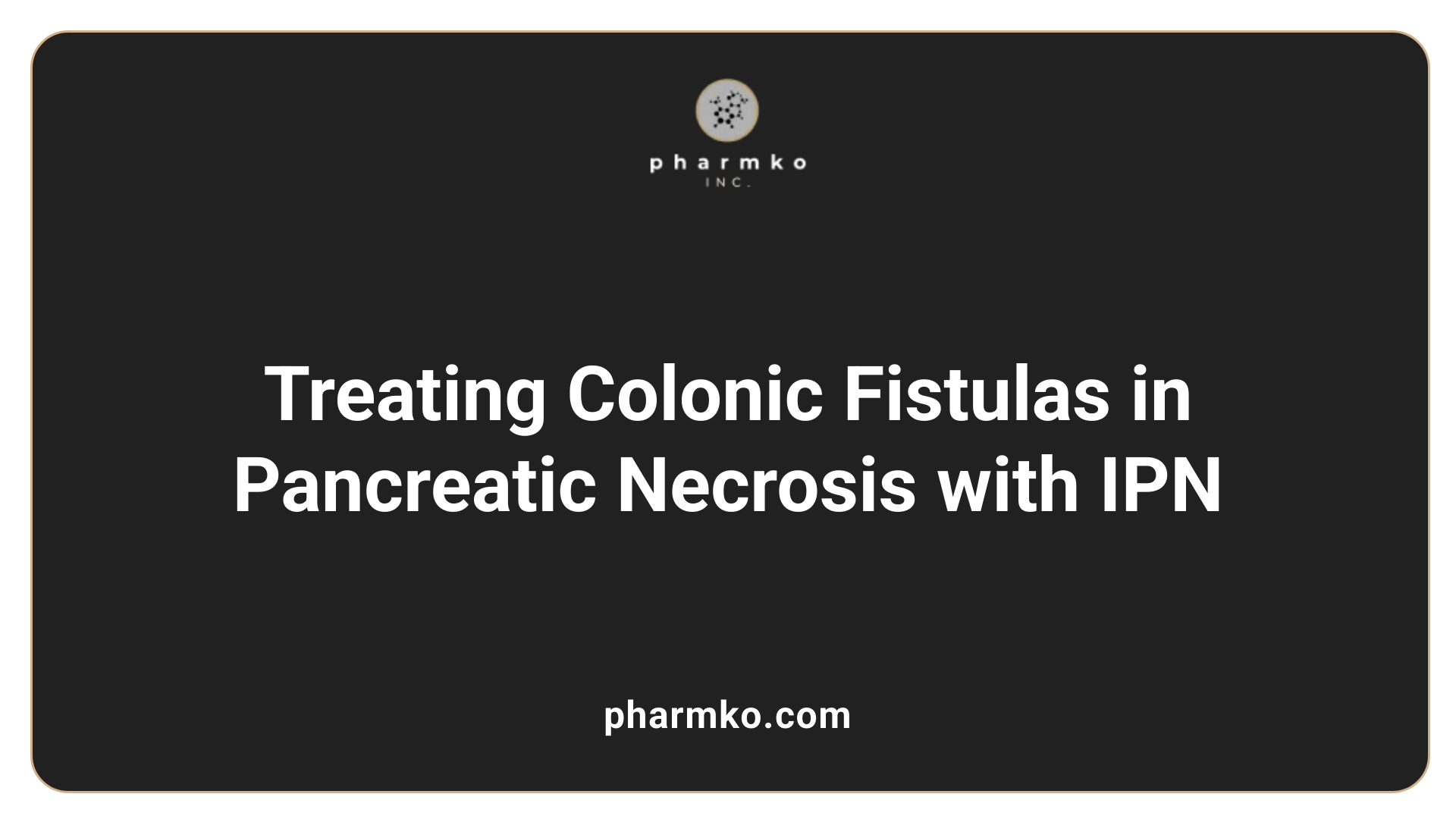
How is IPN applied in the management of colonic fistulas related to pancreatic necrosis?
In cases of infected pancreatic necrosis (IPN), the development of colonic fistulas presents a serious complication with significant mortality risks, observed in approximately 19% of affected patients. Management strategies focus on controlling infection, preventing further tissue damage, and promoting healing.
Nutritional support plays a vital role in this process. Early enteral feeding, particularly via immunonutrients like omega-3 fatty acids, is used to enhance tissue repair and reduce systemic inflammation. Total parenteral nutrition (TPN) or specialized enteral formulations ensure the patient maintains adequate nutritional status, which is crucial for wound healing.
A step-up approach has become standard in managing these complex cases. This involves initially using percutaneous catheter drainage (PCD) to evacuate infected fluids and reduce pressure, coupled with continuous negative pressure irrigation (CNPI) to manage infection and facilitate fistula closure.
These methods have demonstrated safety and effectiveness, with approximately 92% of fistulas managed conservatively closing spontaneously. Maintaining optimal nutrition during this process supports tissue regeneration and diminishes reliance on surgical intervention.
Overall, treatment hinges on a combination of infection control through drainage techniques and nutritional support, both critical for favorable recovery in patients with pancreatic necrosis complicated by colonic fistulas.
Role of Infectious Pancreatic Necrosis Virus (IPNV) in Fish and Gastrointestinal Diseases
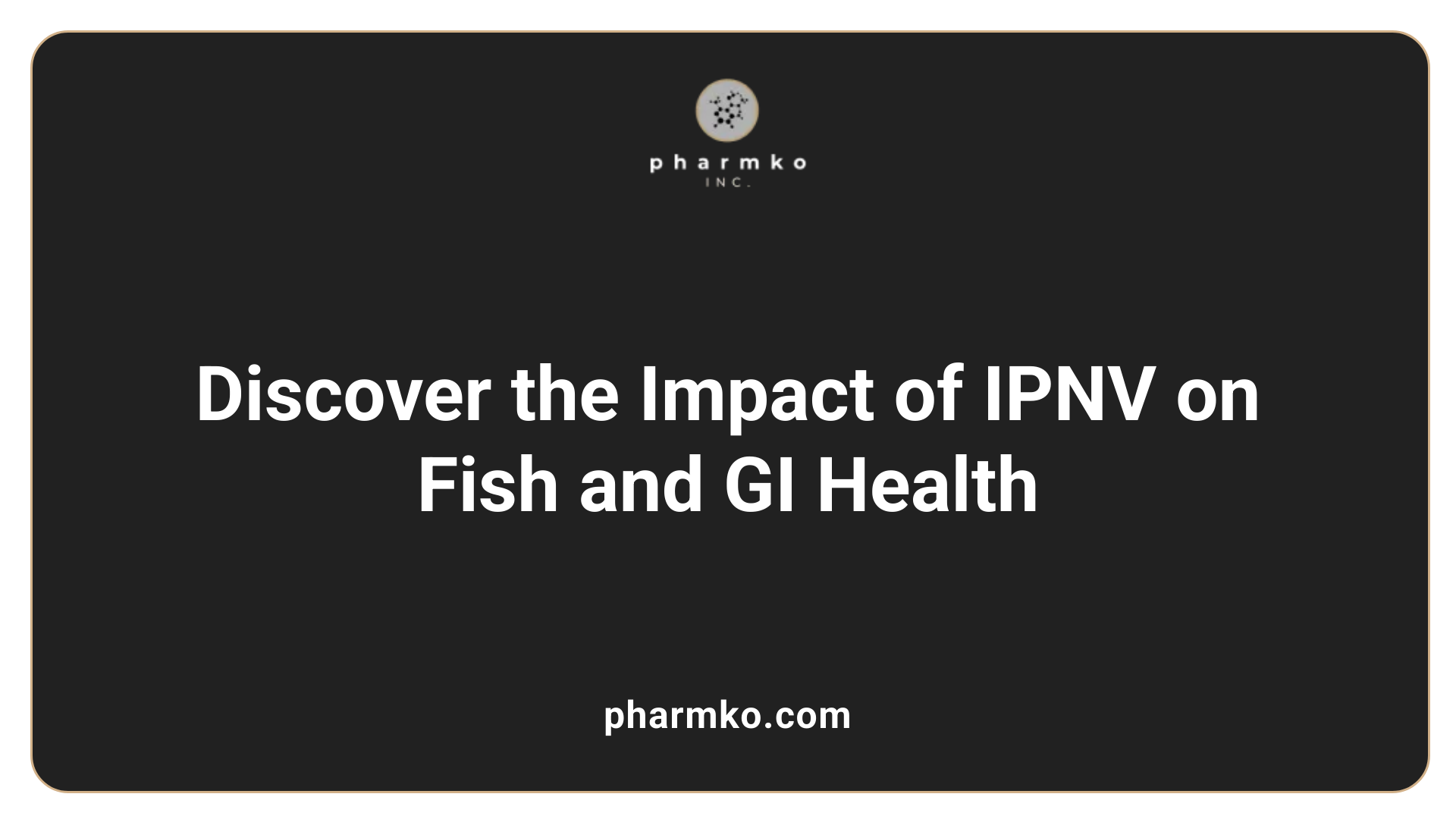
What is the role of infectious pancreatic necrosis virus (IPNV) in gastrointestinal diseases?
Infectious pancreatic necrosis virus (IPNV) primarily targets fish, especially salmonid species such as Atlantic salmon and rainbow trout. Although it is best known for causing infectious pancreatic necrosis (IPN), its involvement in gastrointestinal pathology is notable. The virus causes severe illness characterized by pancreatic necrosis, hemorrhages, and systemic symptoms.
Infected fish often show gastrointestinal disturbances, including abdominal distension and hemorrhages in the digestive organs. The virus infects tissues like the pancreas, head kidney, and spleen, but also invades gastrointestinal tissues such as the gut mucosa. This invasion contributes to the disease process, leading to impaired digestion, malabsorption, and other gastrointestinal issues in affected fish.
While IPNV does not directly cause diseases in humans, its impact on fish health is profound. Gastrointestinal tissues in fish serve as primary sites for viral entry and dissemination. High viral loads within tissues are associated with tissue damage, which exacerbates disease severity.
In aquaculture, IPNV significantly influences fish health, affecting survival and growth rates. Its ability to persist in water and within carrier fish makes control challenging. Consequently, managing its spread is crucial to prevent outbreaks that compromise gastrointestinal and overall health of fish populations.
Transmission pathways and disease diagnosis and control
IPNV transmits mainly through horizontal contact via contaminated water and vertically via infected eggs and reproductive materials. Fish surviving infection often become carriers, shedding the virus intermittently for long periods, thus perpetuating the disease cycle.
Diagnosis involves virus isolation techniques, such as RT-PCR, immunofluorescence, and serological tests, with kidney tissue being preferable for virus detection. Prevention strategies include the use of pathogen-free eggs, biosecurity measures, and vaccination, although vaccine efficacy varies.
Controlling IPNV remains challenging due to its environmental persistence and carrier states. Outbreak management includes strict biosecurity, quarantine, and, in some cases, treatment with disinfectants like povidone iodine. Understanding its role in fish gastrointestinal health helps inform better practices in aquaculture to minimize economic losses and animal suffering.
| Aspect | Details | Additional Notes |
|---|---|---|
| Pathogenicity | Causes severe systemic and gastrointestinal symptoms, including hemorrhages and necrosis | Mainly affects salmonids; |
| Transmission | Horizontal via water; vertical via eggs | Persistence in environment and carriers complicate control |
| Diagnosis | RT-PCR, virus isolation, serology | Kidney tissue preferred for detection |
| Control | Vaccination, biosecurity, disinfectants | Complete prevention remains difficult |
This comprehensive understanding underscores the importance of managing IPNV to protect fish health, especially regarding its effects on gastrointestinal systems and overall aquaculture productivity.
Clinical Features and Diagnostic Methods for IPN in Fish
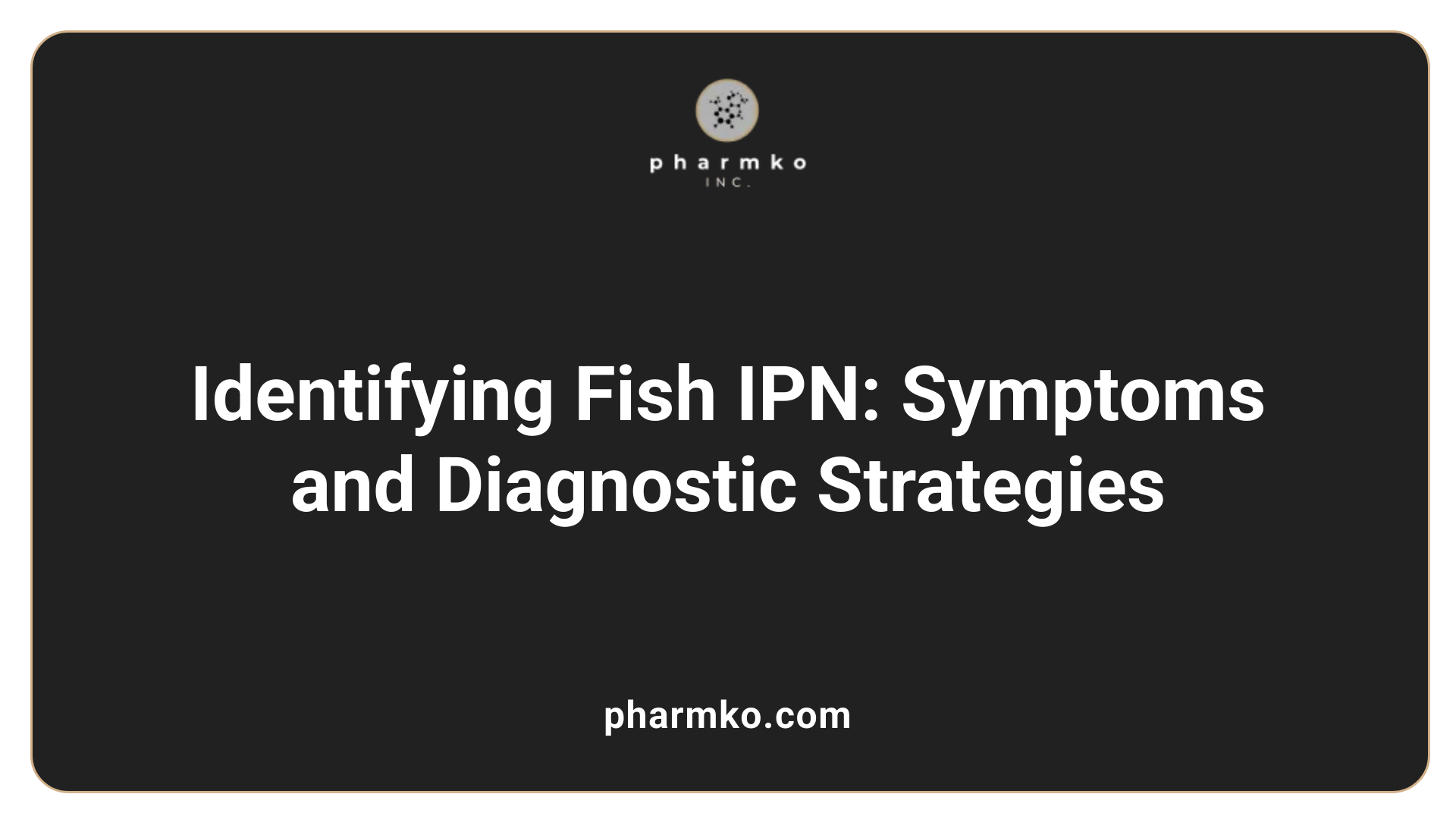
What are the clinical features and diagnosis of gastrointestinal conditions involving IPN?
Infections caused by the Infectious Pancreatic Necrosis Virus (IPNV) in fish are characterized by distinctive clinical signs and specific diagnostic procedures.
Affected fish often display symptoms such as darkening of the skin, an enlarged abdomen, and abnormal swimming behaviors. Hemorrhages may be evident in the pancreas, and congestion can be observed in vital organs like the liver, spleen, and kidney. Histopathological examination reveals tissue damage, including necrosis and vacuolation within these organs.
Laboratory techniques are vital for accurate diagnosis. The virus can be isolated using cell culture methods, which are followed by identifying the virus through RT-PCR, immunofluorescence, and serological assays. The kidney tissue is especially valuable for sampling due to its high viral load in infected fish and ease of detection.
Rapid and precise diagnosis helps in implementing control measures to limit outbreaks. Preventative strategies include using pathogen-free eggs, enforcing strict biosecurity protocols, and applying vaccines where effective. Despite vaccination efforts, strains of IPNV vary, and vaccine success can differ between outbreaks.
This combination of clinical observation and advanced laboratory testing is essential for managing and controlling IPN in aquaculture systems effectively.
Biomedical and Emerging Applications of IPN Systems
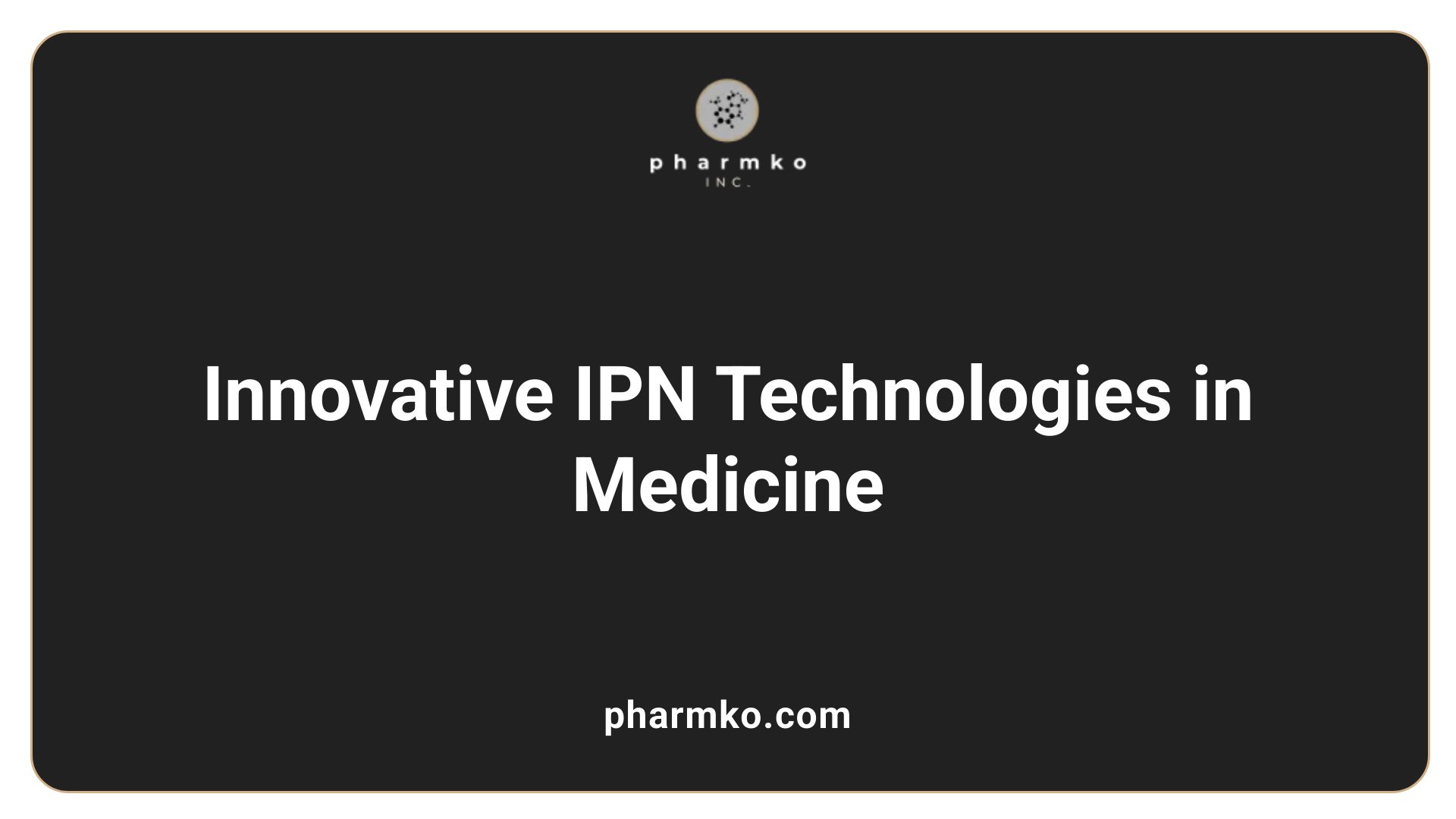 Interpenetrating polymer network (IPN) systems are revolutionizing biomedical applications, especially in areas like controlled drug delivery, tissue engineering, wound healing, and cancer therapy.
Interpenetrating polymer network (IPN) systems are revolutionizing biomedical applications, especially in areas like controlled drug delivery, tissue engineering, wound healing, and cancer therapy.
One of the most notable uses of IPN in the medical field is in gastrointestinal therapy. These systems are engineered to respond to various environmental stimuli—such as pH changes, temperature fluctuations, enzymes, or ionic variations—allowing for precise, site-specific drug release within the GI tract. This targeted approach enhances drug efficacy while reducing systemic side effects.
Natural polymers like chitosan and alginates are often incorporated into IPN formulations to boost biocompatibility, stability, and biodegradability. These hydrogels can be developed into diverse forms such as microspheres, films, or capsules, which protect sensitive drugs like 5-fluorouracil, diclofenac, or antibiotics. The controlled release capabilities of IPN systems improve drug bioavailability and reduce dosing frequency, making treatments more effective and patient-friendly.
Beyond drug delivery, IPNs are also pivotal in tissue engineering, serving as scaffolds that promote cell growth and tissue regeneration. Their tunable mechanical properties and degradation rates allow for customization suited to different tissue types.
In wound healing, IPNs function as advanced dressings that can protect wounds while delivering therapeutic agents directly to the site, accelerating healing processes. Additionally, in cancer therapy, IPN-based drug carriers facilitate controlled and sustained release of anticancer agents, improving targeting accuracy and minimizing adverse effects.
Overall, the versatility of IPN systems in biomedical applications stems from their ability to combine multiple functional polymers into a cohesive, responsive network. These systems are gradually becoming indispensable tools in developing more effective, personalized therapeutic solutions.
Compounds like IPN-60250 (A3907) and Their Role in Gastrointestinal Therapy
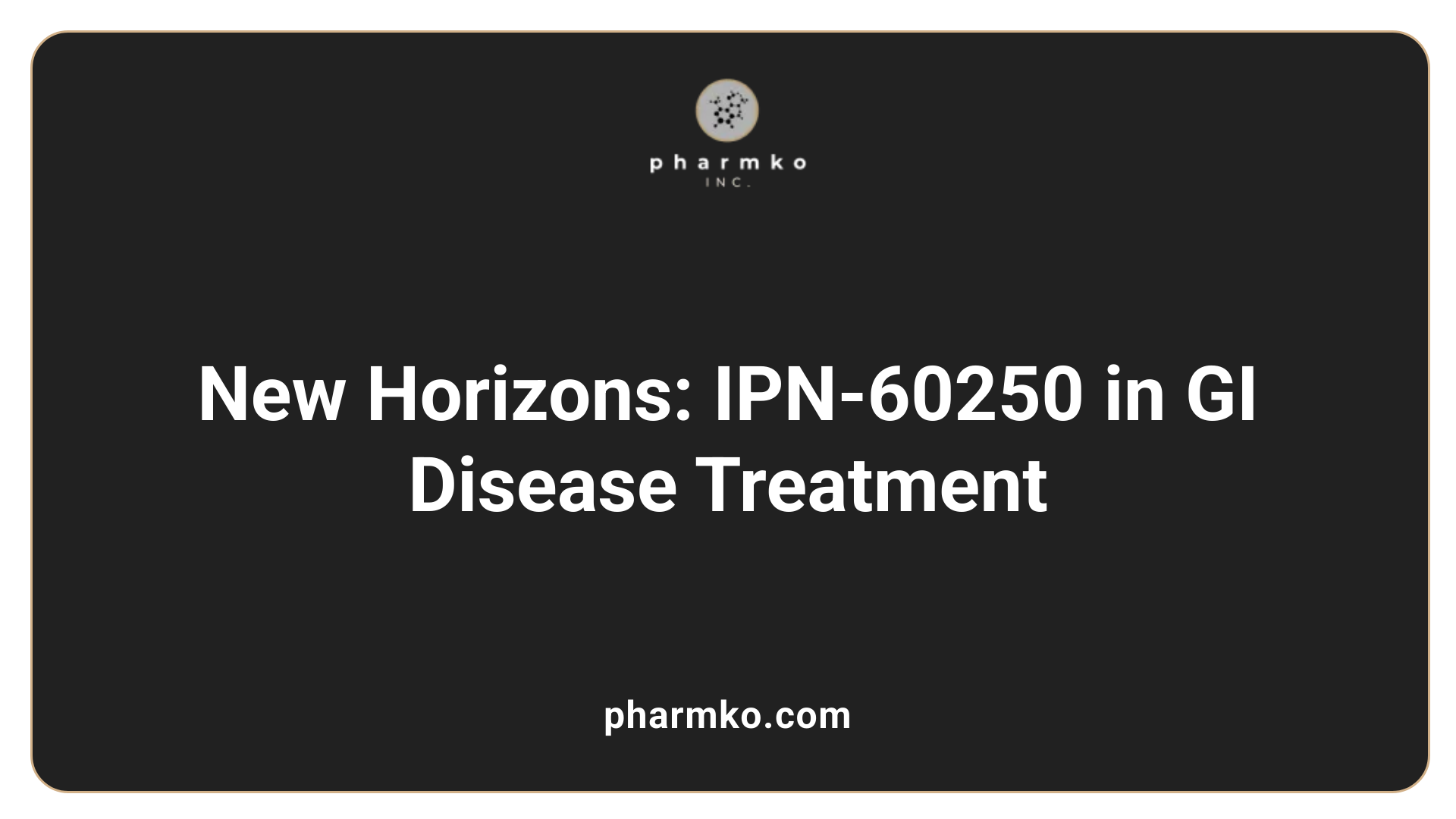
How are compounds like IPN-60250 (A3907) involved in gastrointestinal treatments?
Compounds such as IPN-60250 (A3907) are emerging in the field of gastrointestinal and liver disease management, particularly for conditions like cholangitis and sclerosing cholangitis. These agents are designed to inhibit bile acid transporters, which are crucial in the regulation of bile acid metabolism. By doing so, IPN-60250 (A3907) aims to reduce cholestasis, a common feature of these diseases, thereby decreasing tissue damage and improving liver function.
Currently, IPN-60250 is in Phase 2 clinical trials, reflecting significant progress in evaluating its safety and effectiveness. Its mechanism involves modulating the gut-liver axis, a critical pathway in gastrointestinal health. Restoring this balance can slow disease progression and alleviate symptoms associated with bile acid accumulation.
Research into such compounds highlights a shift towards targeted molecular therapies. These therapies aim to address specific pathways involved in disease processes rather than broad-spectrum approaches, promising more precise and effective treatment options.
The development and testing of IPN-60250 (A3907) underscore the promise of innovative drug design in gastrointestinal medicine. As ongoing studies continue to explore its potential, this compound exemplifies how advances in pharmacology could lead to better management of complex hepatobiliary disorders, ultimately improving patient outcomes.
Additional Information
For more detailed insights into the role and development of IPN-60250 (A3907), searching "IPN-60250 (A3907) in bile acid transport modulation" can provide recent research updates and clinical trial statuses.
The Role of Healthcare Professionals in Gastrointestinal Disorder Management
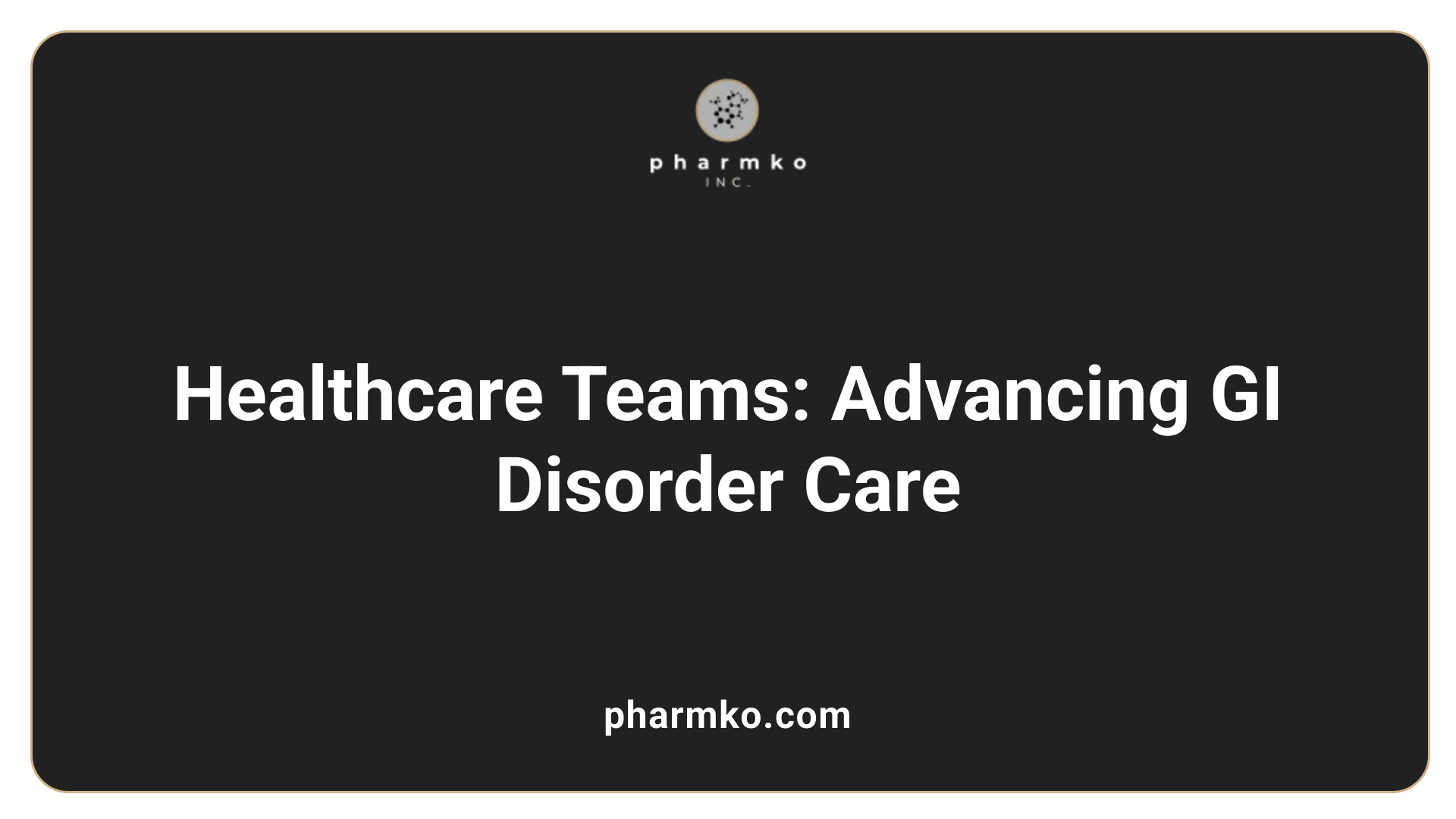
What is the involvement of healthcare professionals such as interventional pharmacist nurses (IPN) in managing gastrointestinal conditions?
Healthcare professionals, including interventional pharmacist nurses (IPNs), nurses, and gastroenterologists, are critical in managing complex gastrointestinal conditions like inflammatory bowel disease (IBD). They provide essential patient education—helping patients understand their condition, medication regimens, and lifestyle adjustments.
These professionals closely monitor therapy response, adjusting treatments as needed to ensure efficacy and minimize side effects. Pharmacist-led care involves optimizing medication doses, conducting therapeutic drug monitoring, and incorporating biosimilars when appropriate.
Nurses offer continuous support, manage symptoms, and reinforce educational messages, ensuring patients adhere to their treatment plans. They also coordinate care with other specialists such as dietitians and psychologists.
A multidisciplinary team approach improves treatment outcomes by addressing not only the physical aspects of disease but also psychosocial factors. Collaboration among primary care physicians, dietitians, mental health professionals, and care coordinators results in personalized treatment plans that adhere to current clinical guidelines.
This teamwork enhances patient quality of life, reduces hospitalizations, and ensures a comprehensive approach grounded in emerging therapies and evidence-based practices.
Future Perspectives in Gastrointestinal Nutrition and Therapy
As research advances, the role of IPN and related biomedical systems continues to expand, offering new opportunities for targeted, effective management of complex gastrointestinal and hepatic conditions. From innovative drug delivery platforms to immunomodulatory formulations, these strategies promise to enhance patient outcomes, reduce invasive procedures, and support tissue healing. Ongoing clinical trials and technological developments underscore a rapidly evolving landscape where multidisciplinary collaboration and personalized medicine are central. The integration of pharmaceutical, nutritional, and surgical approaches, guided by dedicated healthcare professionals, will shape the future of gastrointestinal therapeutics, making treatment more efficacious, patient-friendly, and aligned with the principles of precision medicine.
References
- IDPN & IPN Nutrition Therapy for Dialysis Patients, What's the ...
- Management of colonic fistulas in patients with infected pancreatic ...
- Infectious Pancreatic Necrosis - an overview | ScienceDirect Topics
- [PDF] INFECTIOUS PANCREATIC NECROSIS
- The Emerging Therapeutic Role of Medical Foods for ...
- IPN Systems for Cancer Therapy | Request PDF - ResearchGate
- IDPN & IPN Nutrition Therapy for Dialysis Patients, What's the ...













